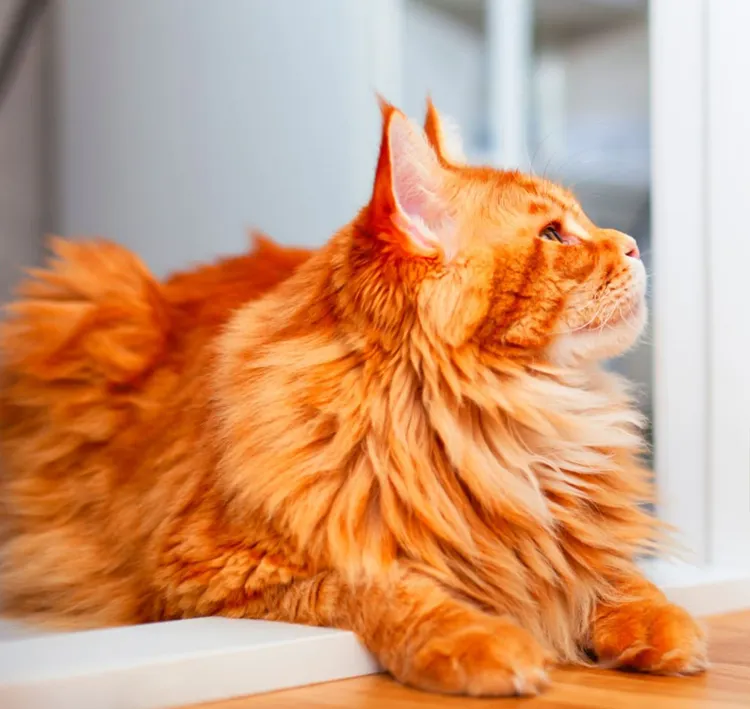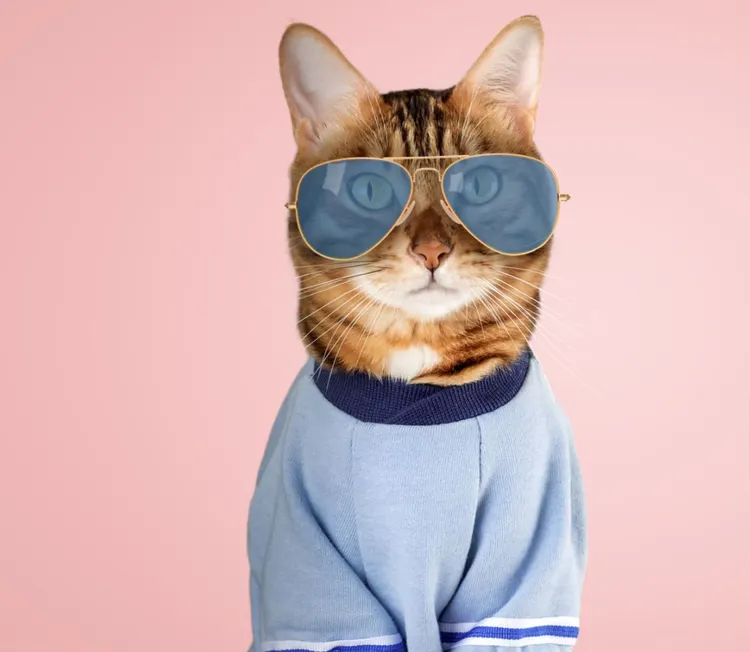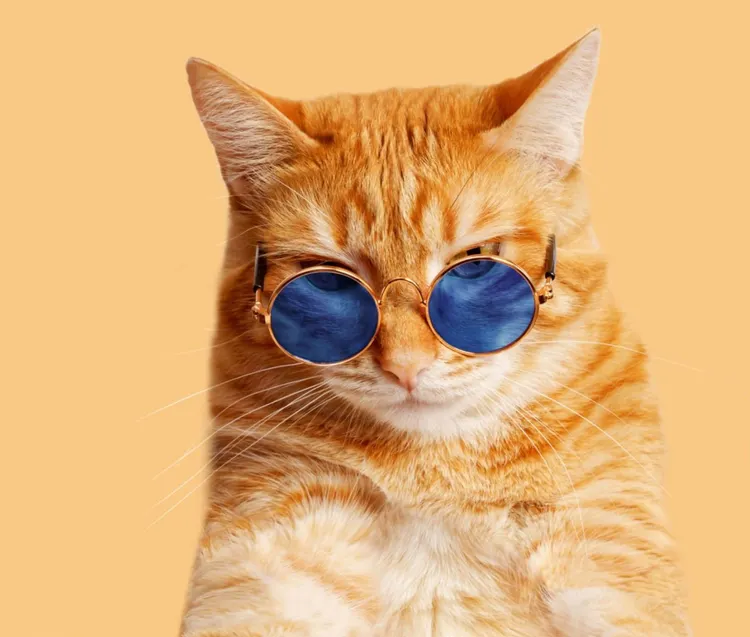Ever wondered if your tortoiseshell cat’s fiery attitude is due to her striking coat, or if your orange tabby’s easygoing nature is because of his sunny fur? It’s a question that many cat owners ponder—whether their cat’s color has anything to do with their personality. We’re often told that black cats are mysterious, orange cats are social butterflies, and white cats are calm and quiet. But is there any truth to these claims, or are they just playful myths? Let’s dive into the history, science, and anecdotal evidence surrounding this fascinating topic and see if we can finally answer whether a cat’s color is linked to their personality.
Historical Beliefs and Folklore About Cat Colors
Cats have long been surrounded by superstition and folklore, and many of these beliefs were based on their color. In ancient times, certain cat colors were believed to possess mystical qualities:
- Black Cats: Historically, black cats have been associated with both good and bad luck. In some cultures, they were seen as protectors and even bringers of prosperity, while in others, particularly during the European witch hunts, black cats were believed to be witches’ familiars and harbingers of misfortune.
- Orange Cats: In contrast, ginger or orange cats have often been viewed as friendly and approachable. Perhaps it’s their bright, warm coloring that has led people to associate them with sunshine and happiness.
- Tortoiseshell Cats: Known as “money cats” in some cultures, tortoiseshells have long been seen as bringing luck and wealth to their owners, but their bold patterns have also led to beliefs about their bold personalities.
It’s clear that, for centuries, people have linked a cat’s fur color to certain characteristics. But while these historical ideas are fun to explore, they don’t tell us much about actual feline behavior. So, what does science say?

What Science Says: Is There a Link Between Cat Color and Personality?
If you’re hoping for definitive scientific proof that your cat’s sassiness or cuddliness is linked to their fur color, the answer is a bit complicated.
One of the most cited studies on this topic was conducted by researchers at the University of California, Davis, who looked at the relationship between cat coat colors and aggressive behaviors. The study, which surveyed over 1,200 cat owners, found that tortoiseshell and calico cats were more likely to display aggressive behaviors during interactions with humans, such as hissing, biting, or scratching. While this may seem to support the idea of “tortitude” (tortoiseshell attitude), the researchers were quick to point out that coat color alone doesn’t determine a cat’s behavior. Other factors, such as genetics, environment, and upbringing, play a significant role in shaping a cat’s temperament.
Despite some correlations, there is no definitive scientific evidence proving that a cat’s color directly affects its personality. In other words, while some studies suggest trends, they don’t confirm a causal relationship.
So, why do so many people believe there’s a link? Let’s look at what cat owners have to say.
Anecdotal Evidence from Cat Owners
Ask any cat owner, and you’ll likely hear plenty of stories that seem to support the idea of personality being tied to fur color. Here are a few examples:
- Tortoiseshell Cats: Many owners of tortoiseshell cats swear by the phenomenon known as “tortitude.” These cats are often described as being feisty, independent, and a bit more demanding of attention. Some owners even claim their tortoiseshell cats are more prone to mischief, which has led to the stereotype that they have a lot of attitude.
- Ginger/Orange Tabby Cats: Orange cats, particularly orange tabbies, are often perceived as being friendly, social, and affectionate. These outgoing personalities make them popular among cat lovers. Garfield, the famously lazy yet lovable comic strip cat, only adds to the association between orange cats and relaxed, easygoing attitudes.
- Black Cats: Although black cats have historically been surrounded by superstition, today many owners describe them as incredibly affectionate and sweet-natured. Their calm demeanor may be why black cats are seen as “mysterious” but lovable once you get to know them.
- White Cats: White cats are sometimes viewed as more aloof or reserved, though many owners report them to be gentle and sweet.
Of course, these stories are just that—stories. While it’s fun to speculate and compare notes with fellow cat lovers, each cat is an individual with its own unique personality.
Common Cat Colors and Their Stereotyped Personalities
Let’s take a closer look at the stereotypes often associated with different cat colors:
- Tortoiseshell Cats (“Tortitude”): Known for their “tortitude,” tortoiseshell cats are often described as independent, strong-willed, and a little sassy. This reputation comes from their bold, multicolored coats, but whether it holds true depends on the individual cat.
- Ginger/Orange Tabby Cats: Often seen as the most friendly and laid-back of all cats, ginger or orange tabbies are thought to be sociable and loving. This idea is so widespread that many shelters note orange cats are adopted faster due to their friendly reputation.
- Black Cats: Black cats are often seen as mysterious, but many owners describe them as being especially sweet and affectionate. They tend to bond deeply with their humans, though they still carry an air of “mystery” thanks to centuries of folklore.
- White Cats: White cats are sometimes thought of as more reserved or aloof. However, many owners describe them as quiet, gentle, and sometimes a bit shy.
- Gray Cats: These cats are often seen as calm, balanced, and a little more introverted. Their gentle nature makes them wonderful companions for people who enjoy a quieter, more relaxed pet.
While these stereotypes can be fun to think about, they are just that—stereotypes. Every cat is unique, and their behavior is shaped by a variety of factors, including genetics, upbringing, and environment.

Breaking the Myth: Why Personality Is About More Than Just Color
While it’s tempting to believe that a cat’s coat color determines its personality, the reality is more complex. Just like humans, cats are shaped by a combination of nature and nurture. Factors like early socialization, environment, breed, and individual temperament play a much bigger role in determining a cat’s behavior than their fur color.
If you’re considering adopting a cat, it’s important to focus on their personality rather than their appearance. Spend time interacting with the cat to get a sense of their temperament and how they’ll fit into your home and lifestyle.
Eco-Friendly Adoption Advice: Choose Cats Based on Personality, Not Appearance
When adopting a cat, especially from an eco-conscious perspective, it’s best to focus on finding a pet whose personality matches your lifestyle, rather than basing your decision solely on their coat color.
Here are some eco-friendly tips for adopting and caring for a cat:
- Adopt from Local Shelters: Consider adopting from a nearby shelter or rescue. This reduces the environmental impact of long-distance transportation and supports local animal welfare.
- Sustainable Pet Products: Once you’ve brought your new furry friend home, opt for eco-friendly cat products. Look for toys made from natural or recycled materials and sustainable litter options like wood or corn-based litter.
- Reduce Waste: Use reusable or biodegradable products for your cat’s care, such as bamboo food bowls or organic cotton beds.
Conclusion: Every Cat is Unique
While it’s fun to speculate whether a cat’s coat color influences their personality, the truth is that every cat is unique. Personality traits are shaped by many factors, and no two cats are exactly alike—even if they share the same fur color. Whether your cat is a feisty tortoiseshell or a gentle gray, their charm lies in their individuality. So, adopt based on personality, not color, and enjoy the quirks and love your cat brings to your life.



